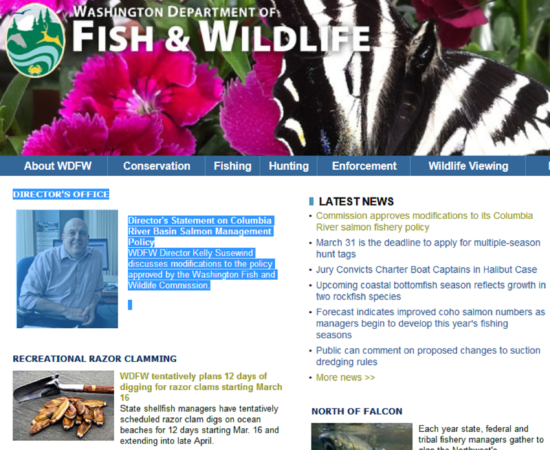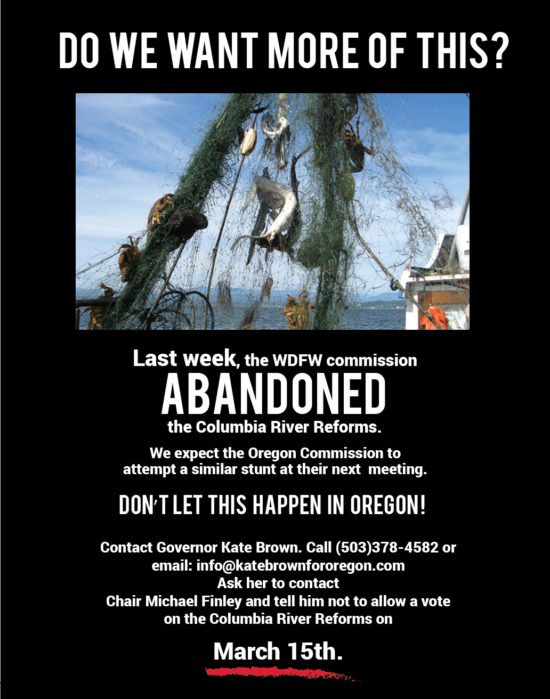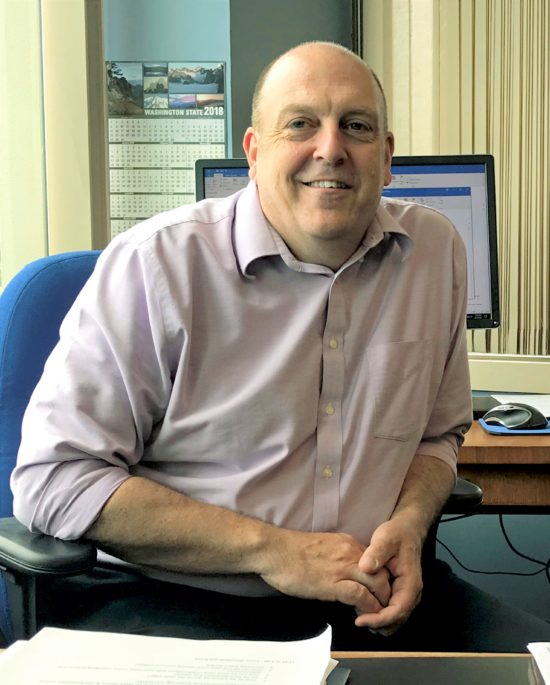NSIA On The Attack After Columbia Reforms Vote As WDFW’s Susewind Defends It
As a major organization in the Northwest fishing world now openly urges its members to oppose WDFW’s fee increase proposal because of the Fish and Wildlife Commission’s Columbia reforms vote last weekend, the head of Washington’s agency has issued an extraordinary statement about why it was passed.

“These actions are not only important in sustaining the economic viability of the commercial fleet,” reads an explanation from Director Kelly Susewind out this afternoon. “They are also a key factor in maintaining federal support for hatchery production and achieving compliance with WDFW’s hatchery reform policy for the lower Columbia River, because they play an important role in removing excess hatchery fish from wild spawning areas.”
With wild salmon runs overall in rough shape, judging by the myriad Endangered Species Act listings, clipped fish fuel fisheries.
The commission’s 5-1-2 vote in Spokane on Saturday morning essentially keeps nontribal gillnets on the mainstem below Bonneville as well as pushes long-planned spring and summer Chinook allocations from 80-20 recreational-nontribal commercial, where they were in 2018, down to 70-30, where they were in 2016 before the reforms began to unravel, and roughly where fall Chinook allocations have also been paused at.
That infuriated supporters of the half-decade-plus-long process such as the Northwest Sportfishing Industry Association, which today issued an “urgent industry call to action.”
“Their vote restores year-round non-tribal gillnetting on the Columbia River’s 13 ESA listed stocks, and dramatically shortens sportfishing seasons already pummeled due to drastic declines in salmon and steelhead returns,” an email reads.
Though this year’s coho run looks good, low fall Chinook and B-run steelhead returns could mean another year of restricted fisheries.
NSIA asked its many member companies and individuals to contact their Washington lawmakers to oppose a pair of bills in the legislature that would increase the cost of fishing and hunting licenses by 15 percent and extend a surcharge for fishing the Columbia and tribs.
Previously, the organization as well as Coastal Conservation Association of Washington had been on the fence over WDFW’s proposed fee hike, neither in favor or opposed, rather “other.”
But with the commission vote and the apparent stalling of a nontribal gillnet ban bill in the state legislature, they now appear to be trolling right through WDFW’s lane.
“Tell them [state lawmakers] you oppose the Commission’s decision to abandon the Columbia River Reforms and ask them to oppose House Bill 1708 and Senate Bill 5692 (Columbia River Endorsement and Agency Fee increase) until the agency’s bills are amended to reverse this horrible decision and hold WDFW accountable to implement the reforms,” NSIA’s email reads.
This year WDFW is asking Evergreen State legislators for a $60 million-plus bump to its budget, a quarter of which would come from the license increases, the rest from the General Fund.
And on the Southern Front, members are also being urged to contact Oregon’s governor and commission chair to try and head off changes ahead of a feared vote next week.
“We’ve got to stop this all-out assault on wild fish, sportfishing and our industry!” NSIA states.

An ODFW spokeswoman says that Oregon commissioners involved in the Columbia discussions “may” give the rest of the citizen panel an update at this coming Friday’s meeting.
“No rule making actions will occur,” said Michelle Dennehy via email this evening.
As for Susewind’s WDFW statement, noting the amount of feedback his agency has received this week — confirmed by a source deep in reform issues — it outlines what led up to the commission’s decision.
The director notes that the policy agreed to by both states in 2012 and which began to be implemented in 2013 and included moving gillnetters out of the Lower Columbia and into off-channel areas of the river and testing alternative gear, included “flexibility” in its transitions.
“Despite years of effort, no new off-channel areas have yet been established in our state and none of the alternative gear are fully tested and ready to support a viable commercial fishery (although test results for some options continue to look favorable). That is why the commission took action to extend the gillnet transition period, first in 2017 and again this month,” Susewind’s statement reads.
“The goal of the Columbia River reform policy is to build a future for both recreational and commercial fisheries, not put the commercial fleet out of business,” he continues, pointing out that the recreational spring Chinook allocation has increased from 65 percent to 80 percent.

That level is scheduled to remain there in 2019, unless a runsize update finds that this year’s poor forecasted run of 99,300 upriver-bound fish is likely to come in at 128,000 and change, which would result in a 70-30 split of what are essentially allowable impacts on ESA-listed salmon.
Susewind also says that the 70-30 rec-comm split of fall Chinook impacts — below WDFW’s 75-25 policy — was meant to ensure concurrency with Oregon salmon managers.
He says that with the annual salmon-season-setting process known as North of Falcon ongoing and wrapping up next month, the Washington commission’s vote was meant to make sure that fishery regulations on the shared river matched up, as well as “to fulfill (the reforms’) objective to ‘enhance the economic well-being’ of the state’s sport and commercial fisheries.”
Susewind claims that delaying the implementation of fall Chinook allocations from the planned 80-20 “would reduce fishing days in 2019 by less than 2 percent, based on model runs from previous years.”
And citing NOAA’s plan to reduce hatchery production in the Lower Columbia due to too many marked fish straying onto the gravel, he says that while “gillnets are not the final answer to this problem … we remain committed to developing new selective methods for commercially harvesting salmon in the Columbia River and implementing the objectives in the Columbia River Basin Salmon Management policy.”
As I’ve reported before, it’s been very rare for a WDFW director to issue statements like this in recent years, but Susewind appears to be bucking that with this and another recent one on the region’s other hot-button issue, wolves.
I appreciate that.
Yes, posting it on a Friday afternoon on the agency’s website but not sharing on social media will allow the agency to say it did put the word out without bearing the brunt of a weekend full of undefended comments on its Facebook and Twitter accounts.
But it will not stop the heated debate about how to manage fisheries on the Columbia.
An observer draws attention to a passage about the adopted recommendations and alternatives presented to the full Washington Fish and Wildlife Commission before last weekend’s vote: “There is no substantial difference between the options concerning conservation benefits,” a staff summary reads.
The debate is sure to continue.
